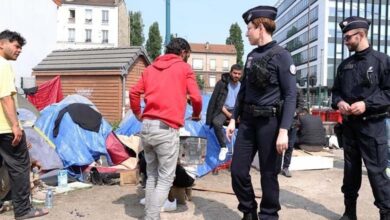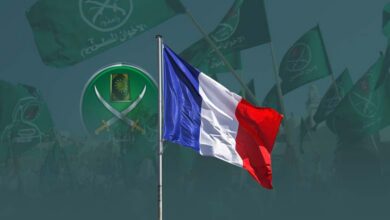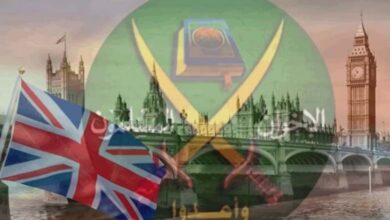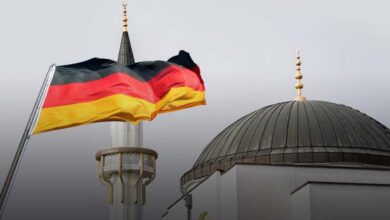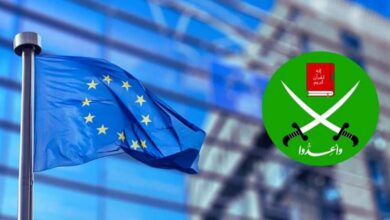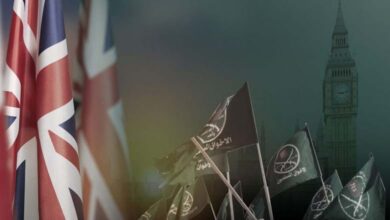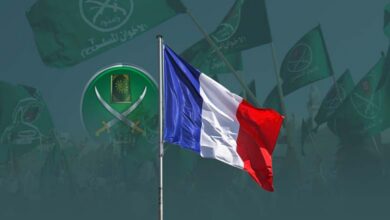Muslim Brotherhood… The dispersed organization of Al-Qaeda draws the map of terrorism in the Arab world

“A poison more deadly than the horrors of war.” A description by French writer Michal Top summarizes the course of the Brotherhood; the scattered organization seeking a “homeland” in the map of its terrorism.
They were uttered by the people, and the governments used them as a bridge to realize their agendas and turned against them. They faced the second diaspora of terrorism that followed the social rejection, even in the countries where the organization had settled for years.
It is a term that explains the confusion its arms are experiencing in the Middle East and the Arab world in general, and attempts to place itself in a map that tries to exploit the chaos by provoking it and benefiting from the destruction it is leaving behind.
It is banned in many Arab countries, and it is tolerated in others, but it also continues to participate in the ruling in other countries. However, what is consistent is that the Arab consciousness, which was formed after crises and wars, condemned the organization to the state of diaspora and wandered forever outside the geography of the homelands.
Al-Ain News monitors the repercussions of the group’s presence in the most prominent Arab cases after the group and many of its leaders were added to the Bahraini terrorist list in reversals that map the destruction in the region:
Yemen
The group’s origins in Yemen date back to the early 1950s, before its political arm was founded in 1990 under the name Islah.
The party, like the other Muslim Brotherhood aides, disavows its relationship with the organization, but the link is firm with the testimony of the ideology and path of this faction, which jumped from the opposition to power in a transformation that it invested in Yemenis.
They are engaged in the government, but they are working against it, through a covert alliance with the Houthi coup militia, exploiting the chaos to advance their agendas, and turning the diaries of the population into successive chapters of tragedy and suffering in a country still reeling under the weight of the coup.
A seemingly obvious path for an organization that has used political technique to position itself and escape crises by investing in them.
Sudan
The group was founded in 1955 under the name of the National Islamic Front, which came to power in a military coup in 1989 led by officers loyal to President Omar al-Bashir.
Sudan has been through decades of oppression and suffering under the Muslim Brotherhood before the people spoke out in late 2018, toppling the Brotherhood’s throne and forcing it to stand on the sidelines.
Despite being expelled from the scene, the Sudanese Brothers are trying to return to Sudan by stirring up chaos. The Committee for the Dismantling of the Former Regime confirmed that it had sufficient information on the activities of members of the dissolved organization and their plans to carry out acts of burning, looting and terrorism against unarmed citizens.
Palestine
The group appeared in Palestine in 1935 before its first statement in 1946.
The group established Hamas in 1987, before the latter took control of Gaza on 14 June 2007, after days of infighting with Palestinian Authority forces during which hundreds of Palestinians were killed and injured.
Subsequently, the movement endorsed government structures that did not receive any international recognition but continued to take over by force in the sector, amid difficult living conditions faced by the population, as well as various restrictions and restrictions.
Libya
The Brotherhood did not find anything better than Libya to submerge, for in that country, which lies at the southern gate of the Mediterranean, there is everything the organization is looking for: abundant riches and chaos.
The group picked up its share of the pie, plunged the country into its evils, plundered its wealth and expropriated its lands for foreigners, through invalid agreements with Turkey, and a military invasion that almost turned Libya back into a colony.
The group tried to strike the chord of the people, but the Libyan street was on the lookout, enlightened by the bitter experience in neighboring Tunisia, where it wrote its way out of the crisis with the ink to get rid of the government of the so-called “reconciliation”, and overthrew all the symbols of the organization, waiting for a final settlement without the Brotherhood.
The group’s origins in Libya began as a clandestine organization in 1968, before coming to light in 1973, when its leadership called on the Libyan people to disband the branch that was banned until the fall of the regime of the late leader Mouammar Kadhafi.
In the chaos that followed 2011, the Brothers of Libya announced the formation of the Justice and Construction Party, and they succeeded in capitalizing on the situation by jumping to parliament in the 2012 elections, clinging to the scene until months ago they were disqualified from entering a new phase.
Tunisia
After Yemen, analysts believe Tunisia is the second Arab country to face real risks from the Brotherhood.
In a country long known for its moderate political climate and the openness of its people, the Brotherhood, through its arm Ennahdha, is trying to bully the community with education, booby-trap administrations, and impose a societal pattern that Tunisians, known for their moderate Islam, largely reject away from extremism.
Tunisia, which was awakened in 2011 by events that shattered its scene, is today facing an organization that is intricate in its hinges, clinging to an authority that in nearly a decade has led the country to the brink of collapse on all levels.
The organization, which has not found a suitable environment for activity in Tunisia since its emergence, has become fraught with revenge against a people it pronounced its greatest blackness, especially after the poor performance of the government has set the country’s indicators back.
The organization originated in Tunisia in 1972 under the name Jamaa Islamiya, which in 1981 became the Movement of Islamic Orientation and renamed itself Ennahdha in 1988.
The movement clings to its renunciation of its parent organization, and jumped to the Tunisian scene after the events of 2011. Its leadership poured in from exile and prisons seeking power and revenge, making the result a crisis country by all accounts.
Diaspora Seeks a “Homeland”
An interconnected society of the inside is hard to penetrate and be weak.. A short quote from Egypt, Libya, Tunisia, the Middle East and the Arab world, to the Gulf and the Middle East in general, where positive transformations have created a consciousness that is resistant to the spillover effects of disintegration and instability in the region since 2011.
As cohesive as the region’s crises have created, the group remains wedded to subversion by exploiting coups and disputes to create alternatives that provide it with a stable position.
The recent Turkish abandonment of the Brotherhood has left the organization in a second diaspora. Its leadership has been forced to leave Turkey for Malaysia and Britain, in a constant loss since the fall of the Mohammed Badie rule and the end of the organization’s rule in Egypt. It is also making continuous efforts to find a base and an alternative house of money.


